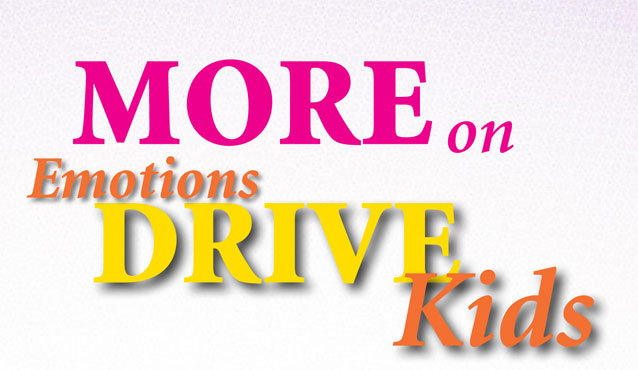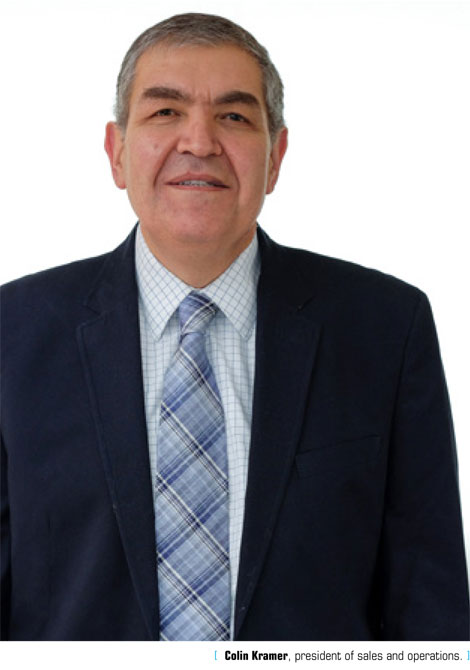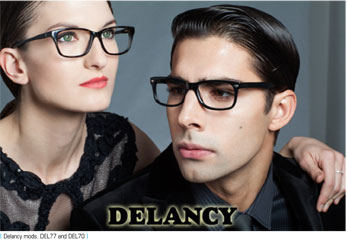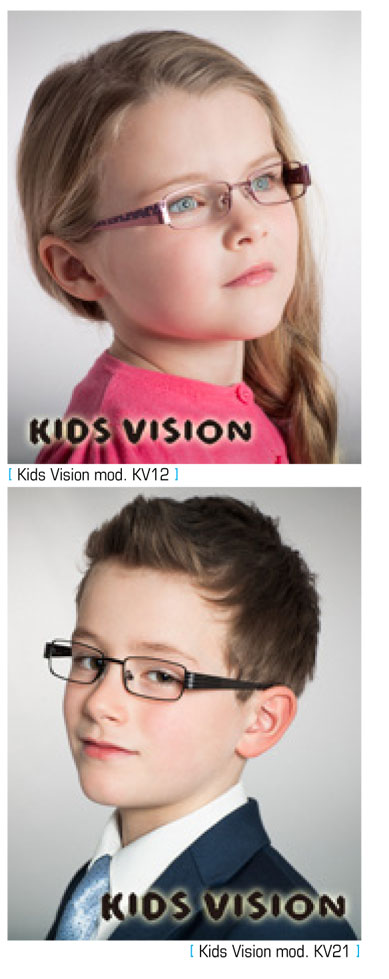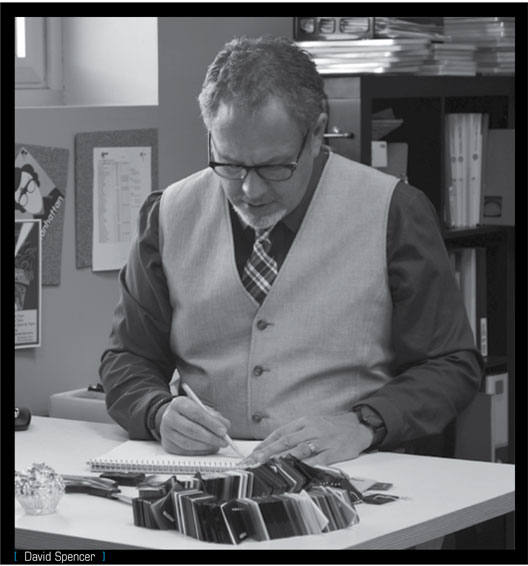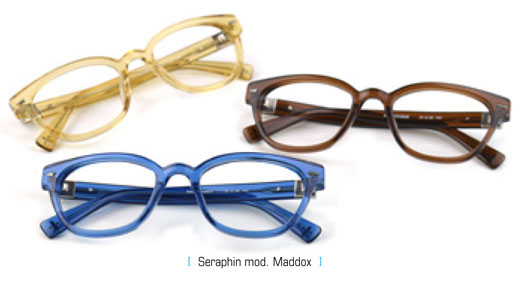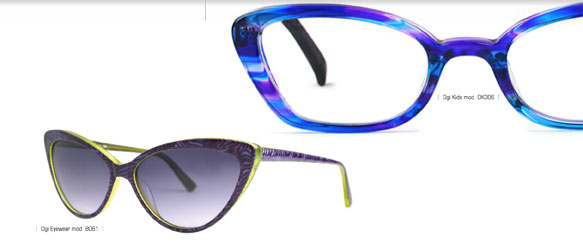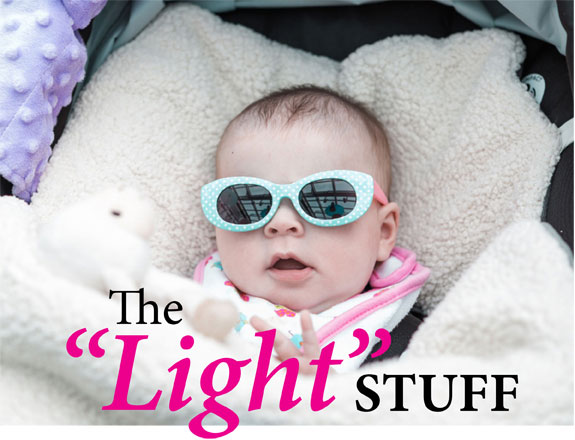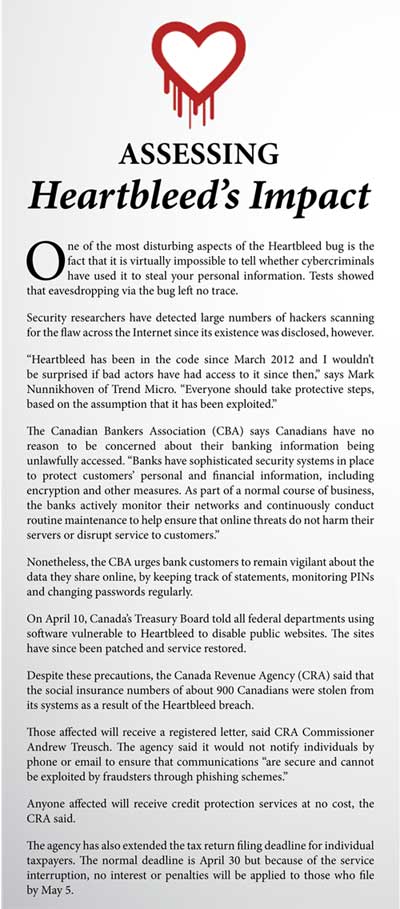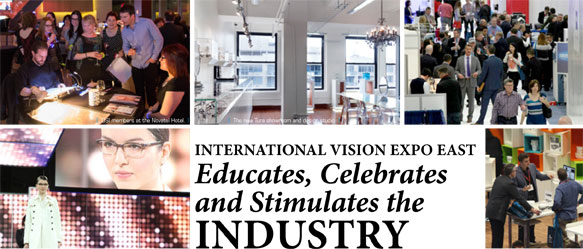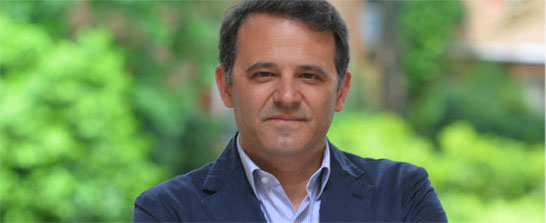By Paddy Kamen
In today’s world, where self-image, appearance and a sense of self-worth are inextricably intertwined, shopping for eyewear is inherently tied to self-esteem. After all, our faces are more than ever our ‘calling cards’. In less than 100 milliseconds, people form opinions about us, based largely on our facial features. Eyewear can say so much about who you are, or who you imagine yourself to be.
So the eyewear purchase is inherently emotional. Is this truer for children and youth than it is for adults? Objectively, yes, for the young brain is nowhere near as developed and is, in fact, ruled more by emotion than the adult brain. According to research conducted at the McLeanHospitalBrainImagingCenter in Boston, MA, adults have greater activity in their frontal lobes than do young people. The frontal lobes help us control impulses and are the areas where cause-and-effect relationships are processed. In contrast, the young person’s brain shows increased activity in the amygdala, the more primitive region that is associated with emotional arousal and impulsive decision-making.[1]
Having said that, we’ve all seen adults driven by impulsivity and emotion, as well as children who seem wise and capable beyond their years. Some parents have as much, or more, emotional energy at stake when buying eyewear for their children than do the kids themselves. Parental emotion could stem from not fully accepting that the child needs glasses, or centre on the cost of the eyewear, or it could have to do with how the brand of the eyewear reflects their idea of the child’s identity.
Margaret Osborne, acting chair of the School of Marketing and Advertising at Toronto’s SenecaCollege, notes that the brand allegiances of parents certainly influence purchase decisions. “The parents are making the decision, and I’ve been surprised how many parents have brand allegiance and want their children wearing specific brands. They see the children as representing them in terms of fashion, image and style. They may want the eyewear to reflect their hopes for the child’s career, so if a kid is good at hockey they want a brand that reflects athletic success, or if they are very focused on academic achievement they want the eyewear to enhance an image of seriousness.”
Some children also come to the optical retailer with pre-existing brand allegiances. “I’ve seen quite young children identify with logos,” says Osborne. “When they see signage for brands they recognize they can be pretty insistent, much like shopping in the cereal aisle of the grocery store. This happens more often than I would have expected.”
Namita Karir, managing optician at Karir Optical Yorkdale in Toronto, says brand allegiance is strong with teens. “I cannot believe how many teens know Dolce & Gabbana, Prada, Chanel and the other designer labels. But most name brands don’t offer a selection of frames for smaller faces so it becomes challenging to give them what they want.”
Keep in mind that store allegiance may in fact be much stronger than brand loyalty. Richard Allan, vice-president of sales for Optika Eyewear, says that parents are likely to bring their children to the ECP they have purchased from themselves. “Having a good selection of children’s eyewear in the store enhances the trust parents have that you can provide for the whole family. They will be more confident with their purchase because of this allegiance.”
Allan is launching Soho Kids this spring, a new collection for children ages 5-11 under the popular Soho brand.
POP: Does it Help or Hurt?
Does point-of-purchase (POP) material promoting licensed brands affect the amygdalae of children, making them hard to work with? After all, the “I want, I want, I want” mantra from a child can be intense.
Sheldon Donksy says yes. “I have pulled down a lot of brand-specific POP because I don’t want kids to get overly invested in wearing a specific brand name. The child can become very unhappy if we can’t fit them with a particular brand.” Donsky is a children’s eyewear specialist who co-owns two stores in Toronto (College Street Optical and College Optical at the Hospital for Sick Children) in addition to Credit Valley Optical in Mississauga.
Marc Spinnewyn, owner of Spinnewyn Opticians in Ottawa, doesn’t think POP makes much of a difference. “Unlike shoes or clothing labels, kids are really open to whatever eyewear looks great on them, regardless of the brand. House brands are very competitive in this sector.”
But Pina Serrani, optician and owner of Jones Optix in Dundas, ON, loves branded POP. “It helps my business because kids can relate to it. I haven’t had a problem making my child clients happy; if one brand isn’t working for them then maybe Disney Princess will. While not many eyewear brands are engaging kids via celebrities, Candies does that with pop artists. If kids feel cool wearing their glasses because of a superhero brand, then I’m all for it. Having said that, I am happy to sell house brands as long as they meet the child’s need for improved vision, quality, fashion, and looking great.”
Because parents are, generally speaking, more rational than kids, most of them have more than just emotion behind the purchase decision. For example, buying sunwear for kids can be driven by fear of the damage caused by UV exposure. But when the sunwear is both cute and super-protective, as with the Cébé Junior line of sunwear from Bushnell, both parents and kids can feel good about the decision.
What are the key emotional needs of children and young people?
According to Margaret Osborne, the need for peer acceptance drives choice. “Many tweens hope that the right look in eyewear will have a positive effect on their social and status needs. Others go about the purchase with fear as a primary motivator: they are terrified that they will make the wrong choice and that others will make fun of them. That is a really tough situation for the professional and the client. The ECP needs to establish credibility with children before they can trust that you are helping them find something that is not going to cause embarrassment.”
Beverly Suliteanu agrees. The vice-president of product development for Westgroupe designs the Superflex kids collection. “Most children and youth feel insecure about wearing glasses so one of the most important things for us is to design eyewear that kids feel good about wearing. The quality and price is there for the parents but we focus 100 per cent of our styling to appeal to the kids. Our styling cues are based on what their entertainment role models are wearing.”
Serrani adds another level of depth to this discussion: children who have a high Rx depend on their glasses and grow attached to them. “They have an emotional need for vision and I’ve seen them resist getting a new pair. Change can be hard on these kids, whereas those with a lower Rx may be functional without their glasses and change is easier for them. Then, too, parents can also feel emotional for many reasons when their child is getting a first pair of glasses. You have to be sensitive to these complex emotions.”
Make it About the Child
One way to establish credibility with kids is to let them know you are familiar with their pop culture and have plenty of experience creating happy child customers. Osborne suggests that ECPs pay attention to the key influencers in the child’s life, like parents and siblings, the “cool kids”, friends, teachers, coaches, and celebrities.
Specific suggestions from Osborne include:
- Try to identify their personal positioning and offer eyewear to support it. For example, “hipsters” gravitate to Ray-Ban, “jocks” to Oakley, “fashion girls” to Michael Kors.
- Ask the child to describe someone whose look they like.
- Ask for a description of any “glasses-gone-wrong” scenarios to avoid.
- Help create a picture of how this eyewear look will work in the child’s world – in the classroom, playing soccer, at the movies, on the bus.
- For youth, provide meaningful and positive cues like “urban hip”, “haute hippy” and “ugly beauty” that they can incorporate in their worldview.
- With children, play off kidvertising campaigns. Know the latest jingles for products they already want – translate the appeal to the brands you have on hand.
While most children just want to fit in with the crowd, you will find that a few of your child customers are trendsetters with the confidence to wear a strong and perhaps unusual frame. Michael Bohbot is president of Bo Optik, a company with several collections for children and youth. He says only 10 per cent of people in any age group are leaders. “The 10 per cent set the trends, while the rest follow. We have pieces for both the leaders and the followers within all our collections.”
Kids Just Want to Have Fun
According to How Cool Brands Stay Hot by Joeri Van den Bergh and Mattias Behrer, shoppers younger than 20, “… are not only more emotional in general, their interactions with brands is (sic) also more coloured by their feelings… youngsters expressed 20 per cent more positive emotions for clothing and mobile brands than other generations.”
Van den Bergh and Behrer found that happiness and surprise are the most valued emotions with this demographic and that humour often goes hand in hand with surprise.
Sheldon Donsky enjoys using humour with kids. “I try to make finding the right glasses the most fun thing they have ever done and I’m sure some of them think I am nuts.” They may think so, but they do come back, as Donsky’s thriving business attests.
Marc Spinnewyn adds, “Buying eyewear is not like going to the dentist – it can indeed be fun. When I sense kids are open to humour I engage them in trying on goofy-looking glasses.”
Event marketing is a big trend in retail and Colin Kramer of Rada Eyewear has just the props to make an event come to life for young shoppers. Rada Eyewear holds licenses for Disney Princess, Spider-Man, Iron Man and The Avengers. Kramer says, “We’re active with trunk shows at optometric practices and opticians’ opening days and show days, and strive to create a fun environment when we come.” Indeed, a large superhero or Princess standup could add an element of surprise to the optical store. Having dress-up costumes on hand for the young ones can also spark engagement.
Can rapport with children be learned?
“It’s measurable in patient satisfaction,” notes Bohbot. “Conduct surveys and ask if the parents and kids are happy with the service they got. And yes, while some people have a real gift, you can get better at it. I’ve seen people do phenomenally well with kids’ eyewear because they invest in the dispensary and hire people who genuinely like kids and build rapport with them. Children love others very easily but you can’t fool them with false camaraderie. That’s the emotional part: having an attitude of ‘we’re here to help you’. If the kid feels important, that is 75 per cent of the sale. Then it’s just a matter of finding the right product.”
Margaret Osborne says that you’ll know from watching a child’s face when you’ve hit the right note. “If you watch young people choosing their eyewear, you see their strong and immediate reaction to the look and feel of the brands they select (and those they reject). When the product supports key emotional needs you will see obvious delight.”
Delight is something kids specialize in. How lovely that eyewear can spark this wonderful emotion!
****************************************************
The Experiential Store
Evoking positive emotion in the children and young people who visit your store is essential if you want them to tell their friends about you and to come back. And one of the best ways to begin the positive experience is to have a dispensary that appeals to kids on the physical level.
Margaret Osborne is a registered intern optician (awaiting her license), who also has an MBA degree and 20 years of senior retail marketing experience. Osborne, acting chair of the School of Marketing and Advertising at Toronto’s SenecaCollege, points out that the children’s section of an optical store is often its least appealing area. “Young customers are more sensitive to the lighting and more affected by lack of mirrors at their level. They often have trouble reaching the product, and can be inhibited by sterile or clinical fixtures. Imagine if the eyewear area of your store was as accessible as LEGOLAND®, or as interactive as a game store. Why not try out digital displays, and user-friendly fixtures that encourage touching, and experimenting? Why not cross-merchandise branded items like t-shirts and ball caps? Bundle some licensed school supplies or games with aligned brands. Offer contests or a gift with purchase to establish a comfort zone for each young client. Help them send out selfies wearing novelty costume items and sporting their final choice of eyewear.”
Pina Serrani, proprietor of Jones Optix in Dundas, ON, is a children’s eyewear specialist who has created an attractive area of her store for her youngest clientele. “I want them to be comfortable, to be themselves, to be kids. I do expect them to jump on the furniture and touch windows and mirrors and try things on. I do what I can to make it positive and fun, like having a box of toys and kid-level displays.”
Anyone who is serious about serving kids must offer a wide selection of frames in bold and beautiful colours and the latest fashions or shoppers will vote with their feet and look elsewhere. “Consumers with children are used to having a wide selection of merchandise from which to choose in every other sector,” points out Michael Bohbot, president of Bo Optik in Toronto and a consultant on optical retail environments. “If you have a poor selection, they won’t take you seriously. And keep in mind that selecting that first pair of eyeglasses can be emotionally difficult for parents and the kids. If you are half-committed to them, they will sense it.”
Serrani agrees. Sales to children and youth comprise about 50 per cent of her business and she always has about 200 children’s and youth frames in stock. “I have a wide variety of frames from size 34 up, fitting infants to teenagers and also adults. I see a lot of kids grow up. They get married and still come in to purchase as adults, so they must have had a good experience here when they were kids.”
In addition to fabulous, colourful displays, try appealing to kids by having the latest high-tech hardware for them to interact with. Osborne recommends having tablets in the store that young shoppers can log into and access videos of their peers trying on glasses. Games that give shoppers a chance to guess which pair of in-house frames a celebrity is wearing could enhance the pleasure of being in your store.
Tapping into the existing interests of 8-12-year-old girls is easy using Instagram and Vine to create lookbooks while they are trying on glasses. “Recent surveys suggest that Instagram is the favourite app for this demographic,” Osborne explains. “They can connect with their friends while shopping and have a lasting memory which reinforces their purchasing decision.”
Ottawa-based optician Marc Spinnewyn marries an old fashion t-shirt give-away (it says, “I Bought My Glasses at Spinnewyn”) with Facebook. “We take photos of the kids in their new eyeglasses, wearing the t-shirt and post them on our Facebook page. The parents appreciate the t-shirt and the kids love being the star of the show. We often have other kids in the same family ask for the t-shirts, too, which we are happy to share with them.”
Music, scents, video monitors showing favourite youth musicians… every little thing you do can make a big difference in the young person’s sense that you care about them and their world. If you make shopping for eyewear a wonderful experience, you can bet they’ll be back, because… who doesn’t want to feel good one more time?
1 TALUKDER, G., (March 20, 2013) Decision-making is Still a Work in Progress for Teenagers. Retrieved from: http://brainconnection.positscience.com/decision-making-is-still-a-work-in-progress-for-teenagers/


